Here are some interesting spider facts:
- Examination of bite records seems to indicate that wandering male spiders have caused the majority of bites to humans. Males, recognised by the modified terminal segment of the palp, tend to wander during the warmer months of the year looking for receptive females of their kind for mating. This leads to the males shorter life span and aggressiveness.
- Pedipalps of spiders are located between the front pair of legs and the fangs, and have the same segmentation as the legs. A male spider bears enlarged ends of his pedipalps, the terminal segments of which are elaborated into organs for the transfer of sperm to the sperm receptacles of the female.Spiders don’t rely totally on muscles to move their legs, they use blood pressure as well.
- It is well known that spiders have multiple eyes, but not all species are the same. In fact, the number of eyes range from eight to zero, most common spiders have only 6, while some cave dwelling species have no eyes at all.
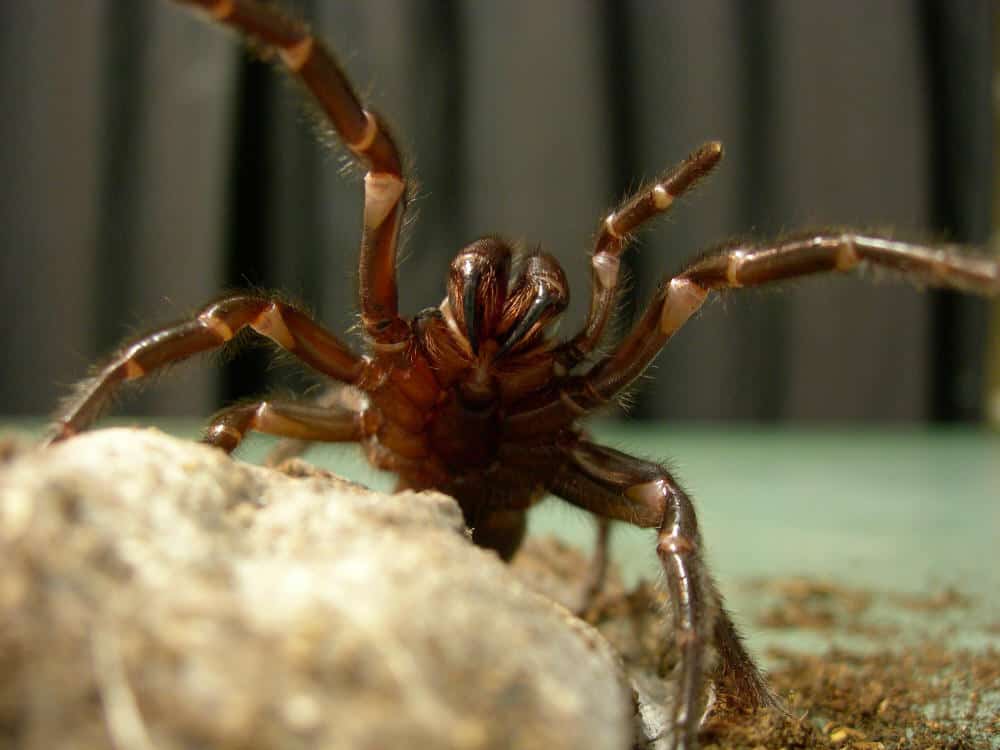
- Several families of hunting spiders, such as jumping spiders and wolf spiders, have fair to excellent vision. The main pair of eyes in jumping spiders even see in color. Net-casting spiders have enormous, compound lenses that give a wide field of view and gather available light very efficiently. However, most spiders that lurk on flowers, webs, and other fixed locations waiting for prey tend to have very poor eyesight; instead they possess an extreme sensitivity to vibrations, which aids in prey capture. Vibration sensitive spiders can sense vibrations from such various mediums as the water surface, the soil or their silk threads. Also changes in the air pressure can be detected in the search for prey.
- As far as the most venomous spiders go, many agree that the Brazilian Wandering Spider, Widow Spiders, Australian Funnel-web Spider and the Recluse Spiders carry very potent vemon. However, no one agrees over which is the most deadly.
- The fangs of so called “modern” spiders act as pincers, moving side-to-side, while tarantulas and funnel-web spiders, considered to be more primitive compared to you average household spider, move up and down. This makes it harder to hold on to prey
- Spiders don’t rely totally on muscles to move their legs, they use blood pressure as well.
- It is well known that spiders have multiple eyes, but not all species are the same. In fact, the number of eyes range from eight to zero, most common spiders have only 6, while some cave dwelling species have no eyes at all.
- Several families of hunting spiders, such as jumping spiders and wolf spiders, have fair to excellent vision. The main pair of eyes in jumping spiders even see in color. Net-casting spiders have enormous, compound lenses that give a wide field of view and gather available light very efficiently. However, most spiders that lurk on flowers, webs, and other fixed locations waiting for prey tend to have very poor eyesight; instead they possess an extreme sensitivity to vibrations, which aids in prey capture. Vibration sensitive spiders can sense vibrations from such various mediums as the water surface, the soil or their silk threads. Also changes in the air pressure can be detected in the search for prey.
- As far as the most venomous spiders go, many agree that the Brazilian Wandering Spider, Widow Spiders, Australian Funnel-web Spider and the Recluse Spiders carry very potent venom. However, no one agrees over which is the most deadly.
- The fangs of so called “modern” spiders act as pincers, moving side-to-side, while tarantulas and funnel-web spiders, considered to be more primitive compared to you average household spider, move up and down. This makes it harder to hold on to prey.
- Tarantulas use their fangs for subduing their prey and carrying it to their dens (or to a safe location) for devouring at their leisure. They don’t have teeth for tearing and chewing their meals so they regurgitate digestive juices onto their victim. These digestive juices break down the soft tissues so that the spider can slurp up its meal. All that’s left when the spider has finished its meal is bones, skin, fur and/or feathers.
- Urticating hairs are one of the primary defense mechanisms used by some tarantulas. This term refers to the barbed hairs that cover the dorsal and posterior surface of the tarantula’s abdomen. Many tarantula species will frequently kick hairs off their abdomens, directing them toward potential attackers. These hairs can embed themselves in the other animal’s skin or eyes.
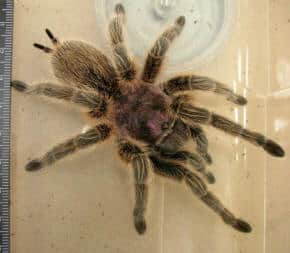
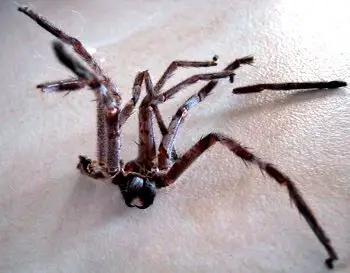
- Believe it or not there are people in South America who eat tarantulas. Many of us in developed countries are repulsed by the idea of eating insects or spiders, but it actually makes sense if you think about it. They are the most plentiful living things on earth and they are a good source of protein.
- In arthropods, such as insects, arachnids and crustaceans, moulting is the shedding of the exoskeleton (which is often called its shell), typically to let the organism grow. This process is called ecdysis. Ecdysis is necessary because the exoskeleton is rigid and cannot grow like skin. The new exoskeleton is initially soft but hardens after the moulting of the old exoskeleton. Along with the complete exoskeleton, spiders shed their fangs and chelicarae, their throats and stomach lining, female genital organs, and the linings of the book lungs.
- Most araneomorph spiders (orb weavers, huntsman, etc.) live from one to three years. Mygalomorph spiders (trapdoors, tarantulas) are generally much longer lived. Some large tarantulas species (Theraphosidae) take six to eight years to mature and live 20 years or more. A long life and continuing moulting and growth allows some of these species to grow very large – the legs of a large goliath spider (Theraphosa blondi) may almost span a dinner plate.
- The Brazilian wandering spider is an aggressive and highly venomous spider regarded by some as the most dangerous spider in the world. The venom of the spider, apart from causing the victim to be in pain also causes uncomfortable hours-long erections. The venom may eventually be used in erectile dysfunction treatments.
- A fascinating feature of goliath bird-eaters, as well as some other tarantula species, is their ability to make noise. We don’t normally associate spiders with noise, like we do with dogs, cats, birds, etc. We are accustomed to seeing spiders silently, stealthily crawling across walls, floors, and the sidewalk. But when feeling threatened, the goliath bird-eater is capable of making a pretty loud hissing noise by rubbing bristles on its legs together. Called stridulation, it can be loud enough to be heard up to 15 feet away!
- A myth states that the cellar spiders, or daddy-long-legs spiders, are the most venomous spider in the world, but that because their fangs are unable to penetrate human skin, they are harmless to humans. However, recent research has shown that pholcid venom has a relatively weak effect on insects. No similar research has been conducted to determine its effects on mammalian biology. However, In the MythBusters episode “Daddy Long-Legs” it was shown that the spider’s fangs (0.25mm) could penetrate human skin (0.1mm) but that only a very mild burning feeling was felt for a few seconds.
- The harmless-to-people Harvestmen (known by the name “daddy longlegs” or “granddaddy longlegs”) are known for their exceptionally long legs, compared to body size. The difference between harvestmen and spiders is that in harvestmen the two main body sections (the abdomen with ten segments and cephalothorax) are nearly joined, so that they appear to be one oval structure; they also have no venom or silk glands thus posing absolutely no danger to humans.
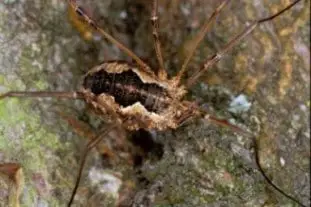
An interesting question: Do Spiders breathe?
- Spiders obtain their oxygen through four respiratory organs located on the underside of their abdomens. These organs are arranged into two pairs, an anterior pair at the very front end of the abdomen, and a posterior pair behind the anterior pair. Each of these can take one of two forms, book lungs or tracheae. In some spiders both pairs are book lungs, in a few both are tracheae, but in most cases the anterior pair are book lungs and the posterior pair are tracheae.
- Book lungs consist of stacks of between 10 and 80 flattened hollow discs. These are bathed in haemolymph (the spider’s equivalent of blood), and the shape of the book lung maximises the surface area at which gaseous exchange can occur. Air enters a hole in the spider’s abdomen called a spiracle and diffuses into the book lungs.
Since the spider’s heart is continually pumping deoxygenated haemolymph through the book lungs, the concentration of oxygen in the air in the book lungs is always higher than in the haemolymph, and therefore oxygen will move from the air into the haemolymph down an oxygen gradient. The oxygenated haemolymph is then pumped to the organs where it delivers its oxygen.
Tracheae consist of a system of branching tubes, which extend from the spiracles to deliver oxygen directly to the organs. It is generally assumed that there has beena gradual evolutionary change from book lungs to tracheae, possibly in response to the need to conserve water, since a great deal can be lost across the large surface area of the book lung. Although doubts have been raised about whether tracheae could evolve directly from book lungs, the book lungs of some spiders have a small
number of greatly elongated chambers, and these have been interpreted as an evolutionary intermediate in the evolution of tracheae from book lungs.
NOTE – Most of these were obtained from unknown websites. Some however where taken from ” Tarantulas and other Arachnids” by Samuel D. Marshall, published by Barron’s.
Latest from the Courier Mail (24 June 2002):
- Goat milk smooth as silk: As comic-book hero Spiderman fills cinemas with his adventures, prepare to meet an equally astonishing creation: Spidergoat. Scientists have combined the DNA from a goat and spider to create an animal which produces silk five times stronger than steel. The fibre, from the goat’s milk, harnesses the huge strength, relative to their size, of silk from spiders. The silk-milk fibre can be used to make body armour far tougher than normal bullet-proof vests made from Kevlar while weighing little more than a cotton shirt. The hybrid goats were created by inserting a gene from an orb-weaving spider into a goat embryo. The goats are outwardly normal, but carry the gene responsible for production of a spider silk protein. Each goat is 1/70,000th spider. Nexia, the Canadian biotech company which produced the goats, hopes the fibre – dubbed Biosteel – could take a large chunk of the $2.6 billion market in industrial fibres. It plans to produce ropes and nets, sporting goods and equipment, fishing lines and surgical stitches.
Denise from Kenosha, Wisconsin has found some more information on Miss Muffett which is really interesting:
- Here in Wisconsin we have a Renaissance Faire, set in 16th century England. We are portraying approximately 1574, during the reign of Elizabeth Tudor. Having worked at the Faire for 10 years now, I was very interested in playing a character that I could use my spider knowledge with. I knew Little Miss Muffett was a real person and I thought she was from the 16th century. So I started some research. I came across a book that listed the “Who’s Who” of London at the time. In that book I found the Reverend Doctor Thomas Muffett. It listed his daughter Patience and I was all set to play Little Miss Muffett. Her father was a family friend to the sea captain Sir Phillip Sidney, who had very close ties with the Queen. Dr. Muffett wrote several books including a cook book that explained how to use local plants and insects in food as well as medicine. Dr. Muffett experimented on his daughter by having all the different types of spiders in England bite her to see if she had any reaction. Thankfully there were no venomous spiders in all of England and there still aren’t any today. Dr. Muffett used his daughter in this way because he considered her expendable. Sons can pass on the family name, but daughters do not, so no harm in using her in this potentially dangerous task. I am sure glad we don’t still live in the 16th century today. Dr. Muffet had another friend named Elizabeth Goose. She and her husband ran a publishing company in London. Elizabeth Goose also wrote children’s poems and later became known as Mother Goose. She wrote the very famous “Little Miss Muffett” that we all know to this day.
Here’s an interesting fact sent in from William, whose initials are WEB so of course he would have an interest in spiders!!
- Quite a few years ago, I was putting an addition on my house near Coatesville Pa. I was nailing down shingles when I noticed a spider on the peak of the roof. The spider was releasing a single strand of web that was blowing in the breeze. When it got long enough, the spider let go of the roof and took off into the wild blue yonder. I suspect he didn’t like the vibrations from the hammering. Later, when I was living in England, I found a book in the library in Uxbridge and I was looking at a book on spiders. I was interested on how a web is constructed (my initials are WEB) and in the book I found a reference confirming my observation. Apparently, spiders can travel quite long distances and achieve very high altitudes using this technique. I imagine that not many of us has had the opportunity to observe such an event.
Regards,
William E. B.
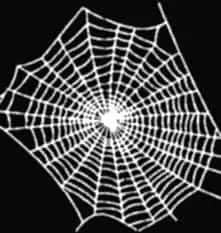
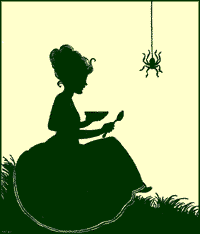
Here’s some spider facts from Mrs Struik’s Year 5 at Pialba State School in Hervey Bay.
Isn’t it great to find another Year 5 that studies spiders!! Thanks for the contribution Year 5, keep them coming!!
- Did you know that Little Miss Muffet was a real girl who lived in England about 2 centuries ago?
- Her dad was a doctor who made her swallow crushed-up spiders as this was a cure for the common cold. Shona
- Did you know that a jumping spider jump forty times its own body length? Louise
- Did you know that no mater how much fly spray you use, you will not kill a Funnel Web? You will only make it very angry! They also have the capability of holding their breath for 72 hours straight if needed, which makes such sprays useless. Isaac
- Did you know that there may be 1000 spider eggs in an egg sac the size of a pea? Fern
Here’s some from Year 5G:
- Did you know that some Tarantula’s bites can cause severe local pain that requires hospitalisation and pain killers?
- Did you know that when the tarantula is upset it will pull hair from its abdomen and throw it at its prey.
- Did you know that Cave spiders usually spin their webs within the first few metres of a caves entrance where there are still insects to be found.
- Did you know that the Brazilian wandering spider holds the record as the most venomous spider in the World.
- Did you know that spiders can amputate their own legs. New but shorter legs appear at the next moult.
- Did you know that Trap Door spiders shut themselves in burrows to protect themselves from their enemies?
- Did you know that Crab spiders (so called because they scurry sideways like crabs) are often the same colour as flower petals?
- Did you know that a spider’s thread is stronger than the same thickness of steel?
- Did you know that a Sydney Funnel Web can survive in water for a few hours. They may seem dead to you but they can revive quickly.
- The Funnel Web spider hunts at night.
- Did you know that the Tarantula was a name given to a small spider in Italy.
- The biggest Tarantula ever was a Goliath Spider and was 7.5cm in length. Its leg span was 28cm. (Thanks to Corey)
- The “tarantule” is the name of a dance.
- Did you know that the Red Back spider has been successfully bred in large numbers at the London Zoo, where males have been mated many times.
- Did you know that most male Black Widow spiders have 2 red dots on each side of their abdomen.
- Did you know that the female Wolf spider’s hairs on their abdomen have special knobs for the young to hold on to when they are getting a piggy back from their mothers.
- Did you know that the bite of some large spiders can be painful but the smaller spiders can not pinch the skin hard enough to get in. Some female spiders are so much bigger than the males that they sometimes eat their mates.
- Did you know that the greatest predator of the Wolf spider is the hunting wasp.
- The Wolf spider stalks its prey like a wild dog or wolf hence its name.
- Did you know that in seven years if you get bitten by a Wolf spider, you could have no arm left because the wound from its bite eats a centimetre of skin every month and there is NO medicine for the bite. Not all bites cause this reaction, some have been recorded from Black House spiders as well.
- Did you know the male spiders don’t build webs to catch their food, instead they are always looking for females to mate with.
- Baby spiders can make perfect webs shortly after hatching.
- Did you know spiders are generally carnivorous and feed only on living prey.
- A spider’s silk is secreted as a fluid and forms a polymer.
- Did you know that the latest news is that not only female Red Back spiders harm people but the male Red Back has also put people in hospital.
- As a contrast, the male Funnel Web spider is 5 times more deadly than the female.
